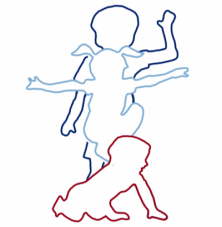The Child Language and Learning Lab studies how children learn languages and other patterns from the world around them.
To learn more about their research at Penn, click here.
Publications
Schuler, K.D., Lukens, K., Reeder, P.A., Newport, E.L. & Aslin, R.N. (in prep). Children can use distributional cues to acquire grammatical categories.
Austin, A., Schuler, K.D., Furlong, S., & Newport, E.L. (in prep). When children learn more than they are taught: Regularization in child and adult learners
Fama, M.E., Schuler, K.D., Spiegel, K.A., Lacey, E.H., Newport, E.L., & Turkeltaub, P.E. (in prep) Impacts of healthy aging and left hemisphere stroke on statistical language learning.
Schuler, K.D., Yang, C., & Newport, E.L. (in prep) Children use the Tolerance Principle to determine the computational efficiency of forming a productive rule during language acquisition.
Schuler, K.D., Reeder, P.A., Newport, E.L., & Aslin, R.N. (in press). The effect of Zipfian frequency variations on category formation in adult artificial language learning. Language Learning and Development.
Schuler, K.D., Yang, C., & Newport, E.L. (2016) Testing the Tolerance Principle: Children form productive rules when it is more computationally efficient to do so. Proceedings of the 38th Annual Conference of the Cognitive Science Society.
Schwab, J.F., Schuler, K.D., Stillman, C.M., Newport, E.L. Howard, J.H., & Howard, D.V. (2016) Aging and the Statistical Learning of Grammatical Form Classes.
Booth, A.E., Schuler, K., & Zajicek, R. (2010). Specifying the role of function in infant categorization. Infant behavior and Development, 33(4), 672-684.
